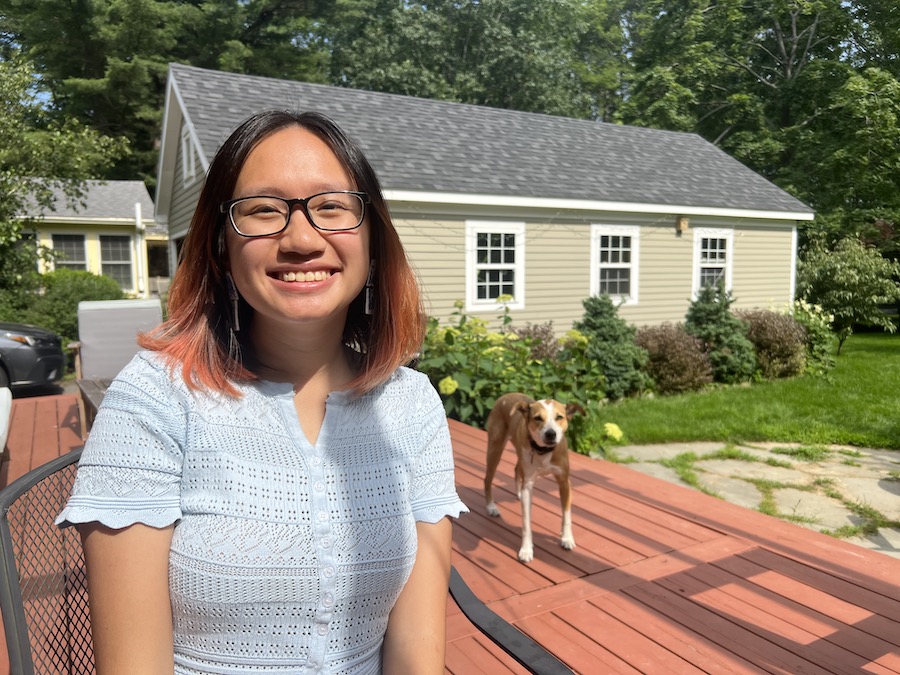We're Here, We're Hyper, and We're Popping: A Queer Analysis of Hyperpop
By Rebecca Goldfine
Hyperpop—to those of a certain age who might not be hyper-tuned to youth culture—is a "microgenre that is very much characterized by maximalism," Tran explained. "A lot of hyperpop is exaggerated. It's more an attitude of being excessive and celebrating that."
Musicians like Charli XCX, the late Sophie, and 100 gecs use technology and distortion to create new sounds while relying on the catchy melodies of pop.
As Tran began paying more attention to hyperpop, she noticed something else. "A lot of hyperpop artists are queer and/or trans, and I realized that a lot of the demographics who listen to hyperpop are queer and/or trans," she said. "And I was like, 'Why is that?' I wanted to find out why this music is drawing in so many people who identify as queer."
"Femmebot," by Charli XCX: "Hyperpop never takes itself seriously," Tran said. "A lot of the ideas are playful and sexual in nature, and this song is one of those. This idea of the post-human element comes up, because a half-human, half-robot entity is telling the narrative in the song. I think this is another example of where hyperpop challenges our understanding of what pleasure means."
"Immaterial," by SOPHIE: In this song, SOPHIE, who was a transgender artist, "plays with what bodies mean, driving it to a point of rejecting the material where bodies can be regulated," Tran said. "And she also plays with the idea of gender, when we no longer use bodily markers to determine who we are."
"Money Machine," by 100 Gecs: "Even for hyperpop, they're on the more extreme side," Tran admitted.
Last spring, she asked her advisors in the gender, sexuality, and women's studies department, Angel Matos and Keona Katrice Ervin, whether she could dedicate the summer to answering this and other questions. With their support, she received a Kaufman Family Fellowship from Bowdoin to spend her days on campus reading theory, meeting with her faculty advisors, and writing.
She made a decision early on to analyze hyperpop through a post-human technological lens, to figure out how hyperpop fosters what she calls a "queer future-oriented thinking," especially around the body, kinship, and desire.
She's basing her thesis on the ideas of theorist José Esteban Muñoz, who conceptualizes queerness "as something always on the horizon," that is, as an aspirational state, something to strive for. He argues that we "not be complacent about the present but always try to make things better and move toward queerness," Tran said.
One way hyperpop makes a case for a certain kind of future is by expanding our notions of the physical body, extending or distorting bodies through lyrical storytelling, digital technology, makeup, and costumes. It's a way to defy social and physical restrictions, Tran said.
"We can look at how society, which is very much defined by heteronormativity, tries to regulate and organize bodies and how people relate to one another. And with queer individuals, that regulation can be even more intensely felt," Tran said.
"In hyperpop you have a revision of what bodies mean, what relationality means, what pleasure means," she continued. "What does it mean for people to relate to one other if you're not thinking just about the physical body, but you're also thinking about the semi-physical aspects of yourself?"
Read more about students' summertime research projects funded by Bowdoin fellowships.
Queering Video Games, with Assistant Professor of Gender, Sexuality, and Women's Studies Angel Daniel Matos: "That was my introduction to queer theory and to gender, sexuality, and women's studies, and I was really fascinated by this idea that something could be queer beyond just the representational or narrative level. I really enjoyed the readings, and it was a really fun class because we were talking about video games through an academic lens. It still remains my favorite class at Bowdoin because of how transformational it was for me; it opened up this whole new area I wasn't aware of before."
Gender and Sexuality in Teen Cinema, with Matos: "We watched a variety of teen movies, ranging from time periods and from around the world, and we talked a lot about what teenagehood means, and about how this category of adolescence separates childhood and adulthood, and that it is an interesting age range because there is still so much control, regulation, and supervision put on this age group. And we explored how different movies either tried to resist that control (many teen movies have this parental figure as an obstacle to the journey to maturing), and we also looked at more specifically queer teenagers and at the conflation of the coming-out narrative with the coming-of-age narrative."
Data Structures, with Assistant Professor of Computer Science David Byrd: Data Structures is one of my favourites at Bowdoin because it was really fun to work on the lab assignments in the course, which was like solving puzzles that were equally challenging and gratifying. CS classes also exercise my brain in a very different way from GSWS classes, which makes for a much more balanced academic experience.